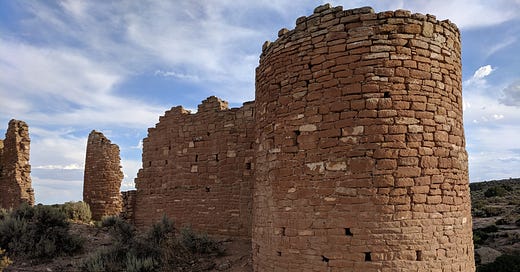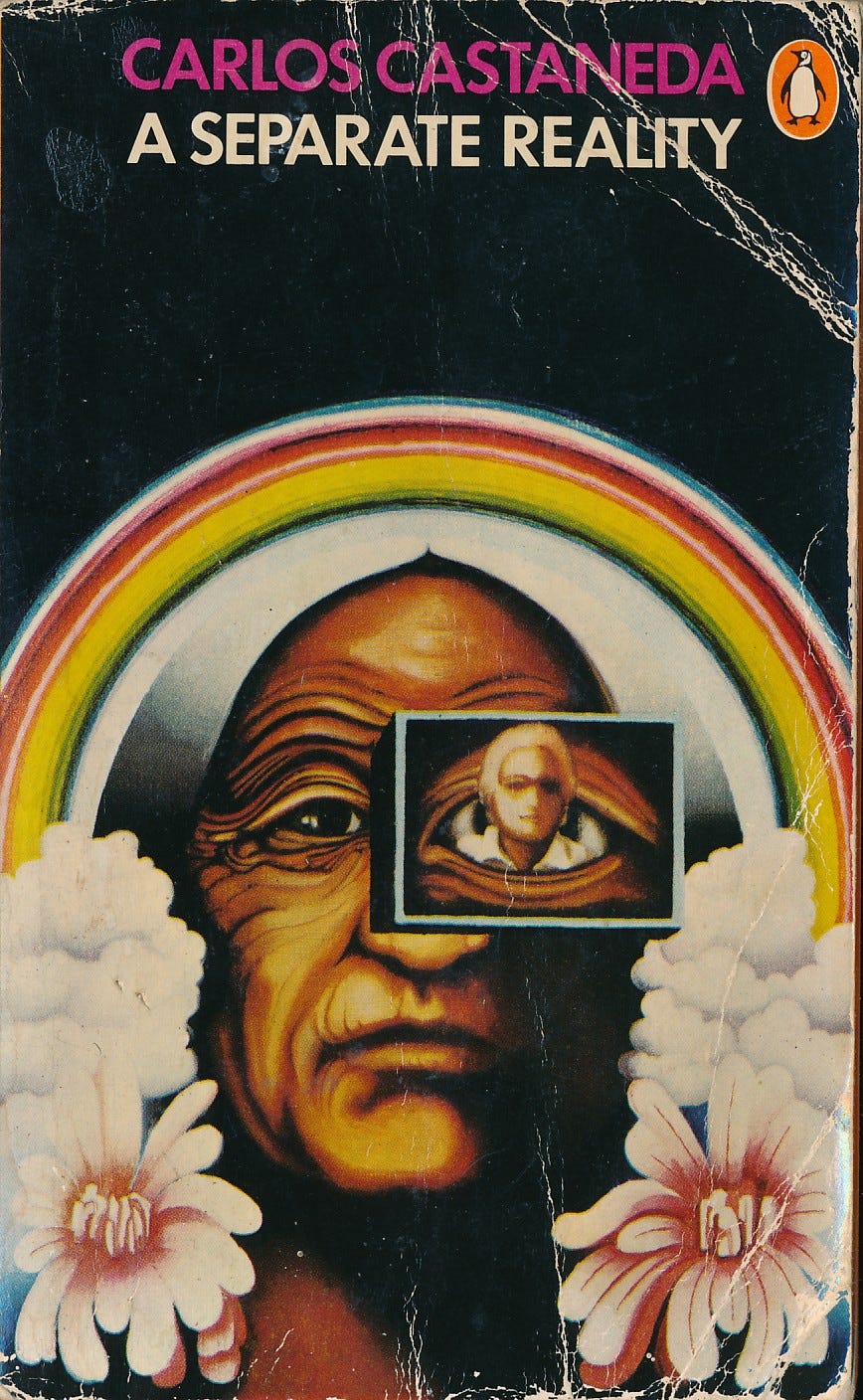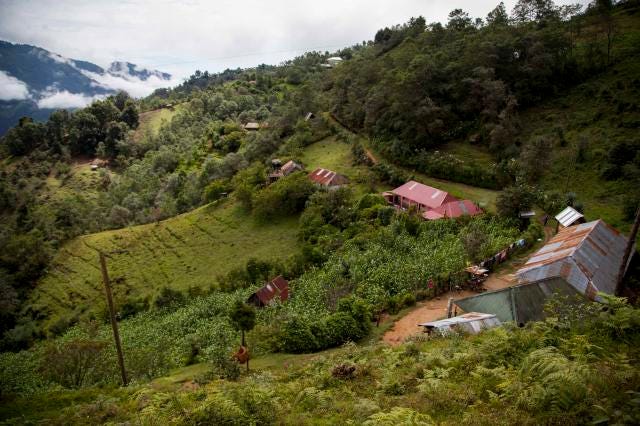Ancestral Heritage, A Journey of Discovery, Part 1
What's in a name? I once thought it too vague and ambiguous to comprehend, but upon closer inspection, I found there was more, much, much more.
As a child, I felt my surname was odd and I didn’t understand where it came from. I don’t think I gave it much thought. I just knew that I didn’t understand it.
Over time, I became interested in words, the origin of words, their implied meanings, “original” meanings, and their etymology. I still didn’t consider my name any further. It was a given (to me), that it was simply odd. It didn’t even seem Irish to me, although it was clear that we were. However, I knew of no one else who had this last name until, as a child, the credits rolled down the screen after watching a world war II drama with my father and saw “John Slattery” as one of the actors. I was amazed - there’s another one of us!
My search was vague and fleeting for many years. In fact, I must admit, I was so completely ashamed of my heritage that at a point in my mid-20s I made up stories about where I came from (thanks to Carlos Castaneda’s books), including my name and background. I was wrapped up in the reconfiguring of self, the becoming empty, that Castaneda’s books promoted. That philosophical framework warped my mind, I now feel, such as to cause me to negate myself rather than embrace it fully, even for all its pain, longing, and disconnection. Perhaps Castaneda’s writings were meant to convey something else, but I’m inclined to believe there was a diabolical undercurrent to these otherwise wise teachings meant to free the minds of individuals. But that’s another subject for another time.
Continuing with the condensed version of my tale, I went further down the path of struggling with identity of self. By the mixture of influences of Castaneda’s books and the hatha yoga community, I continually found ways to not look (or feel) deeply into what was happening within myself, but to instead “transcend” the pain, or pursue an outward appearance of being altogether. This would only prolong the suffering while providing superficial sensations of enlightenment along the way through detached experiences of myself within the world.
I came about as close as I did to feeling and processing these emotional memories (other than intimate relationships - but the intensity of such didn’t allow for much opportunity for awareness to grow) while studying acting. While being trained in the process of Method acting, I found myself very quickly coming into contact with the raw, unprocessed emotions within myself. I recognized quickly that these provided for powerful material, and was at the root of my desire to follow this path as I recognized this raw power in the performances of other Method actors (James Dean, Marlon Brando, and Montgomery Clift) that I sought to emulate. Unfortunately, I was beginning a hatha yoga practice at this time as well which promoted evenness and peacefulness through all adversity. No one helped me to understand how I could “allow” these powerful emotions to exist while not allowing them to take over my being and thus fall short in my endeavor to achieve balance through my hatha yoga practice. It took me some years to see the error of this relatively rigid thinking and to recognize the opportunity I may have missed, but at that point Method acting was long behind me.
While staying in Guatemala, at Lago Atitlán, the “umbilicus of the world” I was seriously engaged in daily meditation and yoga practice, fasting, and various esoteric study and practices. Set free from American society and the urban landscape, I was in the preliminary stages of my apprenticeship to Mother Nature. Thus, I was less influenced by philosophical ideologies or group think, and more immersed in an experiential education, set adrift on the path to be cut for me by the wind in my sails, or the spiritual road map I was tuning into on a daily basis.
It was here that the pain began to surface again in great waves, particularly ancestral “memories” which had no images, per se, nor did they contain specific knowledge yet, but the feelings were robust. Memories can be conscious or unconscious. When we tune into the somatic intelligence (perhaps through dreaming, fasting states, long, multi-day hikes in remote nature, or prolonged intense physical activity, etc.) these memories may be released spontaneously. That’s one thing about our conventional society. It buffers the interface between our conscious and subconscious minds to prevent us from exchanging information back and forth. We become “specialized” even within our level of awareness and our experience of ourselves such that the world around us may become particularly flat. This internal disconnect may be one of the major reasons for depression within our society, not biochemical imbalances.
This pain was the initial stage of revelation of what was to come, still some years down the road. But it was during this time that an intimately warm and clear vision came to me. I entered a simple adobe home with mud floors. There in the soft light of evening was a family of indigenous Americans, I presumed, all seated at the table awaiting my presence. Their simple joy was as welcoming as anything I had known. I understood them as my family and that I was ‘coming home’. I searched for some years for this “home” and believed myself to find it on two occasions. First, in Brazil, with an indigenous family of the Tapuya Fulni-ô tribe, and once again in Arizona amongst the Navajo.
It was here amongst the Navajo that I began to appreciate my own heritage, my own ancestral culture. But it would take me a number of years to learn what was happening, and even more to fully embrace the idea of coming back to the embrace of my own ancestors.
Hovenweep National Monument - or remnant round tower in the Southwest US?
The culture of dispersed hamlets of pastoral peoples with a rich spiritual life interwoven across clans, a strong warrior culture, centuries of adversity at the hands of an oppressor, a close relationship with the landscape and a language which evoked this, gambling and sport, sweat lodges, storytellers not afraid to stretch the truth a bit, healers, herbalists… all of these qualities I could attribute to the Navajo after spending time amongst them on the reservation for many years. Yet it took me a number of years to even begin to see my own ancestral culture from Ireland begin to emerge from the darkness from behind my view of Navajo culture.
There was a dawning moment in which I had to laugh. It was there all along but I could not see it, not at all. Yet now my heart was just beginning to warm to the idea. I could feel the excitement within me. I wanted to learn more yet I felt a peace within me that something was settling into a place in which it was meant to be.
Shame had followed me throughout my life. Yet as I sought my path (my Tír Raon) and followed it with courage (at least at times) I could feel myself emerging from this dark place of shame, step by step. The trials and pain I experienced were an initiation just as they were a part of a cleansing process which was serving to uncover my essence as well as the truth of who I am and where I come from.
Serendipitously, my young family ventured to Ireland for a few weeks when my daughter was a toddler. I had no expectations other than I’d probably have to sustain some unsavory food options while there. Not only was I very wrong about that, this trip held a great deal more in store for me than I could have imagined.
I should have had an inkling when listening to a cd of Irish “children’s songs” with my daughter (some featuring tales about the boy who was hung for stealing, the whore who tromps in the mud, the warriors losing limbs and eyes, and other cheerful material) and I became overtaken with emotion with the familiar feel of my deceased ancestors through these songs. But it wasn’t yet clear to me that I was about to walk across a threshold and through a portal into the ancient past.
Upon arriving, I felt like I was home. Not only that, people recognized my family name, instantly! And knew where we were from! I felt like I knew my way around and had no troubles driving on the other side of the road through endless roundabouts and down murderous rural lanes built for 1 horse cart, not 2 modern vehicles. It all seemed in order to my sensibilities.
The land began to speak to me, ever so gently and subtly. This was a momentous time yet at the time it seemed as normal and as fluid as taking a breath or feeling the ocean breeze against my face. I was in tune with the landscape. I felt home.
I had felt shame for this heritage much of my life. I had been taught that we were drunkards and not much more. Good musicians, poets, and storytellers, yes, but that’s not much to get by on in this world. Eager pugilists if not brave warriors, but not men of high culture. Maybe bar stool philosophers but nothing to take seriously. Even Cahill’s book, How the Irish Saved Civilization was, in retrospect, an inherited discounting of the true heritage of the island substituting a Roman Catholic education as the measure by which these Irish monks managed to be in a position to transcribe important works of history and literature during the so-called Dark Ages - how had they spread throughout Western Europe in the first place??
From Conor MacDari (1923):
“The state of learning on the continent of Europe at that time (Reign of Charlemagne), wherever the influence of the Roman Church was dominant, was at a very low state or nonexistent. It was only in the monastic establishments maintained at different points on the continent by the monks of the Irish Church that learned men were to be found. There were practically no learned men in the Roman Church at that time. Even a century later when the Emperor Charlemagne espoused the cause of the Roman Church, he had to get Irish schoolmen for instructors to teach in the palace school which he established.”
The tragedy of the Irish was a given in my mind and was something I had failed to question or explore much at all (that’s what sustained trauma can accomplish). It simply was. I had carried this ignorance through much of my life, and I very well may have been living out an inherited story that was seeking to find its true expression, buried beneath the lies told oneself due to shame and trauma. True expression meant to emerge through the courageous embracing of the pain.
And so went my birthing into the state of rememberance. Beith - the first letter, or fidh, of the first aicme of the arcane Ogham language of the ancient Irish, or Hibernian peoples. Beith for birch, Beith for “B”. The sound evokes the meaning. Similar to Sanskrit, the properly expressed sounds are meant to evoke the various layers of meaning naturally embedded within the sound (sean scríbh, by the way, pronounced “shan screeve” means ancient writing in Irish). Specific meaning is derived from the context and the grouping of sounds. This was the culture that I had forgotten, or to be fair, had never been shown throughout my lifetime. This culture, I was coming to learn, which was forcibly removed from the face of the Earth, had been removed from the consciousness of a great many people - perhaps widespread across the Earth. This culture, which was intimately connected to the natural world and held a vast knowledge on how to live in civilization with honor and integrity.
This was my heritage. This was all our heritage.
In Part 2, I will go deeper into my explorations into my surname and the numerous connections discovered (including some unifying themes of Western civilization) carrying me across the globe, across time, in search of what is true.







Nice. Thank you. Where is part 2?
What a fantastic story to tell of how our innate human tribalism is not exclusive of our ultimate common origin regardless of tribe. It is that second link that many people miss. Also, never knew that Gaelic has similarities to Sanskrit which further makes the point. Amazing how shame can condition us to unrecognized needless suffering, lots of us can relate